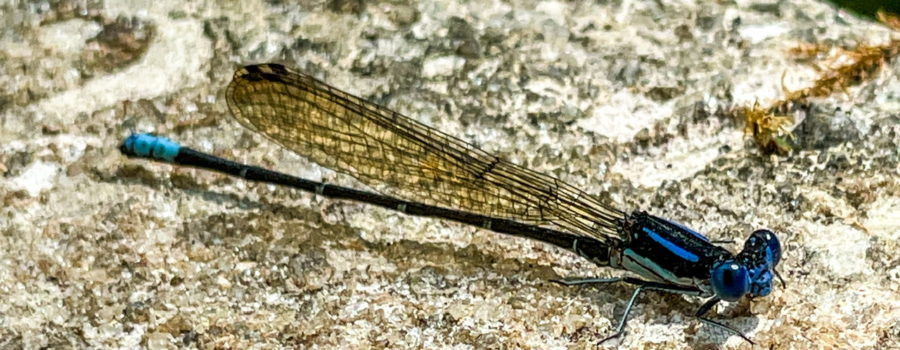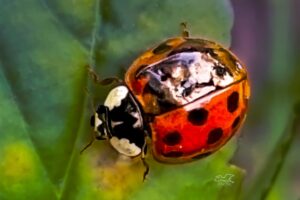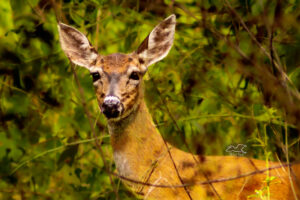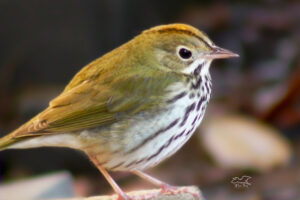The Blue-Ringed Dancer is Beautiful to See and Eats Pests

One of my favorite summer insects is the blue-ringed dancer, which is a type of narrow-winged damsel fly. Now, you may ask (because I did several years ago when I was studying these insects as part of an entomology class), what’s the difference between a dragonfly and a damsel fly? It’s mainly a matter of size, with the damsel flies being noticeably smaller than the dragonflies. There are also some other minor differences, but size is the most important and easiest to see. The dancers are a subset of the damsel flies that are known for their uneven, dancing flight patterns. Dancers are also noted to hold their wings up off the abdomen in an elevated position when resting. This is in stark contrast to most damsel flies that don’t rest as much as the dancers do, but drop their wings down to the level of the abdomen when they do rest.

I don’t have blue-ringed dancers on or around my property. The sandhills are much too dry for them. They are pretty common along rivers, streams, lakes, and even ditches that stay full of water and have a good growth of aquatic vegetation. I remember first seeing them when I was in high school and we first moved to Florida, but I’ve seen them many, many places over the years. They’re pretty common here in Florida and in quite a bit of the southern United States, Mexico, and Central America. I’ve always liked their graceful, dance-like flight, but their color was what first made me notice them. The adult males have a gorgeous blue head, blue and black striped thorax, and a blue tipped abdomen. If you look closely, you’ll also notice that there are several thin blue rings around the abdomen, too. Interestingly, the females and the young males are a fairly dull brown color. It wasn’t until years after I first noticed them that I discovered that those beautiful blue damsel flies and the plain brown ones were the same species.

Like dragon flies, the damsel flies eat other flying insects, but because of their smaller size, they eat smaller insects. Many of the insects that make up their diets are ones that people would classify as pests. These include fruit flies, mosquitoes, gnats, noseeums, and midges. The larval damsel flies (called naiads) also eat water insects like mosquito larvae, small worms, and other aquatic insect larvae. Between the adults and the naiads, damsel flies make a significant contribution to the control of flying “pests”. Both dragonflies and damsel flies require water to lay their eggs. After mating, the female damsel fly lays her eggs on aquatic vegetation at or near the waterline. When the eggs hatch, the naiads live an entirely aquatic lifestyle until they mature enough to develop wings and begin breathing air. Naiads actually breathe water by pumping it through internal gills in their abdomens. As you can imagine, these naiads look very different from the adults that we all know and love. Most people never even notice the naiads, but if you look carefully on aquatic plants and floating sticks or twigs you may be able to spot one of their molted skins. So the next time you go to the river, the lake, or out to a place like Henry Beck Park with a slow running stream, keep your eyes open for the beautiful blue-ringed dancer and evidence of its larvae.






Recent Comments